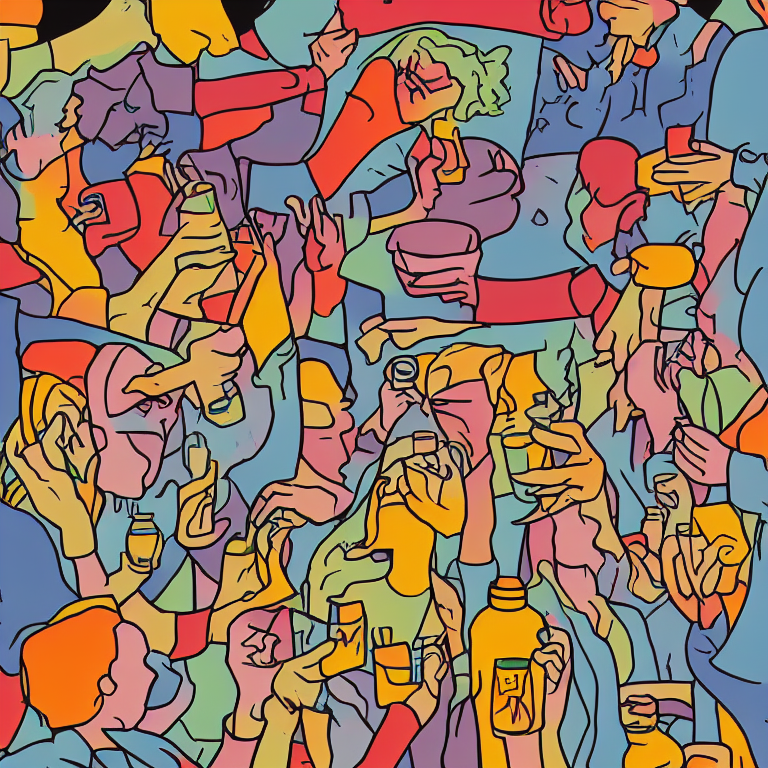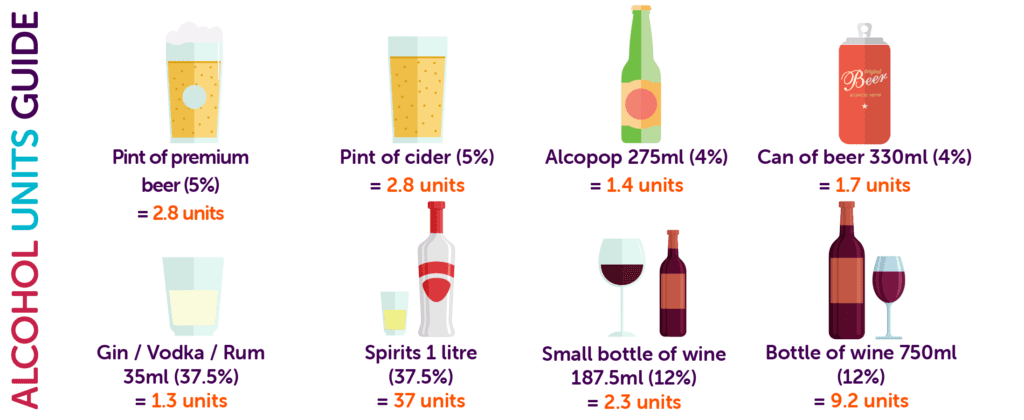Every instance I attempt to discuss harm reduction, I comprehend the vastness of this topic, even for a single substance. However, alcohol undeniably emerges as one of the leading substances in this regard. Alcohol, being a psychoactive compound, has accompanied human history for millennia. Despite being socially and culturally acceptable and legal, alcohol has the potential to severely damage human lives. While I will exert significant effort to address harm reduction alcohol strategies, I acknowledge that some topics may need to be excluded for the sake of the article’s coherence. So, let’s dive into this pool.
Strategy for harm reduction alcohol

The alcohol harm reduction strategy involves a range of measures that aim to reduce the risks associated with alcohol consumption, both at the individual and population levels. Here are some key components of a harm reduction approach to alcohol:
- Education and awareness. Providing accurate and accessible information about the risks associated with alcohol consumption, as well as strategies for reducing harm, can help individuals make informed decisions about their drinking.
- Access to treatment. Providing access to evidence-based treatment for alcohol use disorder, such as medication-assisted treatment or cognitive-behavioral therapy, can help individuals to manage their drinking and reduce harm.
- Regulation and enforcement. Implementing policies and regulations around alcohol sales, advertising, and taxation can help to reduce the availability and appeal of alcohol, particularly among young people.
- Interventions
- Screening and brief. Screening individuals for problematic alcohol use and offering brief interventions, such as counseling or motivational interviewing, can help to identify and address alcohol-related issues early.
- Community-based. Engaging communities in efforts to reduce alcohol-related harm, such as promoting responsible drinking behaviors and supporting alcohol-free activities, can help to create a culture of moderation and reduce the social and economic costs of alcohol.
- Targeted. Some populations may be at higher risk for alcohol-related harm, such as pregnant women, young people, and individuals with co-occurring mental health or substance use disorders. Targeted interventions, such as providing prenatal education and support or implementing college-based prevention programs, can help to address these specific risks.
Overall, harm reduction strategies for alcohol use is a complex and multifaceted issue that requires a comprehensive and coordinated response. By combining these strategies, it is possible to reduce the harms associated with alcohol consumption while still recognizing the importance of individual choice and autonomy.
Weekly drinking guidelines for alcohol harm reduction

The weekly drinking guidelines for alcohol harm reduction vary by country. Generally, they aim to provide guidance on how much alcohol consumption is considered low-risk. The guidelines are based on the amount of alcohol consumed per week, rather than per occasion. Research suggests that regular, heavy drinking is more harmful than occasional binge drinking.
Here are some examples of weekly drinking guidelines from different countries:
- United States: The Dietary Guidelines for Americans recommend that women consume no more than 7 drinks per week and men consume no more than 14 drinks per week.
- United Kingdom: The Chief Medical Officers’ guidelines recommend that both men and women consume no more than 14 units of alcohol per week, spread over at least 3 days.
- Canada: The Low-Risk Alcohol Drinking Guidelines recommend that women consume no more than 10 drinks per week and men consume no more than 15 drinks per week.
- Australia: The National Health and Medical Research Council (NHMRC) recommends that healthy adults should drink no more than 10 standard drinks per week, with no more than four standard drinks on any one day. The NHMRC also recommends that individuals have at least two alcohol-free days per week.
- France: The French National Institute of Health and Medical Research recommends that men should not consume more than 10 units of alcohol per day, and women should not consume more than 5 units per day.
- Japan: The Japanese Ministry of Health, Labor and Welfare recommends that men should not consume more than 3 to 4 units of alcohol per day, and women should not consume more than 2 to 3 units per day.
- Spain: The Spanish Society of Family and Community Medicine recommends that men should not consume more than 35 grams of alcohol per day, and women should not consume more than 22 grams per day.
- Germany: The German Federal Center for Health Education recommends that men should not consume more than 24 grams of alcohol per day, and women should not consume more than 12 grams per day.
It’s important to note that these guidelines are based on average levels of risk and may not apply to everyone. Some individuals may be more sensitive to the effects of alcohol or may have underlying health conditions that increase their risk of harm. Additionally, the guidelines do not take into account individual factors such as age, weight, and medication use, which can affect how the body processes alcohol.
Why some cannot follow alcohol harm reduction advice

There are several reasons why some individuals may struggle to follow harm reduction alcohol pieces of advice. Even when they are aware of the risks associated with alcohol consumption. Here are a few possible explanations.
Addiction. For individuals with an addiction to alcohol, following harm reduction advice may be challenging. Addiction is a complex condition that can make it difficult for individuals to control their alcohol intake. Even when they know that it is harmful.
Mental health issues. Mental health issues, such as depression or anxiety, can also make it difficult for individuals to follow harm reduction advice. Some people may use alcohol abuse as a coping mechanism. It may be challenging for them to find other ways to manage their symptoms.
Social pressures. Peer pressure or social expectations can make it difficult for individuals to follow harm reduction advice. For example, in some social situations, drinking heavily may be seen as a way to fit in or have fun.
Lack of knowledge. Some individuals may not be aware of the risks associated with alcohol consumption. Or they may not know how to practice harm reduction. Education and awareness campaigns can help to address this issue.
Economic factors. In some cases, individuals may not have access to resources that would enable them to follow harm reduction advice. Such as affordable healthcare or healthy food options. Poverty and economic inequality can make it challenging for some individuals to make healthy choices.
Examples of Harm Reduction in Alcohol Prevention and Treatment

I really want to tell you the examples that Ph.D. Eric Single wrote back in 1996 in his work “Harm Reduction as an Alcohol-Prevention Strategy”. How long have we been trying to improve the situation, and how much has it become better?
Scotland has introduced a harm-reduction approach to alcohol by implementing special glassware in pubs. When this glassware is broken, it crystallizes into fine particles. So it is impossible for combatants to use glass shards as weapons against each other (Plant et al. 1996).
The “Nez Rouge” (“Red Nose”) program in Quebec is another example. It`s providing a community-based service that offers two drivers to anyone who has had too much to drink at a party or a licensed establishment and needs a safe ride home (Single and Storm 1985).
In addition, many American cities offer free public transportation on festive occasions, such as New Year’s Eve. This category of harm reduction also includes measures that are not specifically aimed at reducing drinking consequences. Such as the introduction of airbags in cars, which reduces the number of alcohol-related traffic injuries and fatalities.
Another category of harm reduction involves substituting less intoxicating or harmful beverages for traditional alcoholic drinks. Many countries have introduced low-alcohol options, such as light beers, low-alcohol wines, and even light spirits. Which can reduce alcohol intake without affecting the overall volume of drinking. This approach maintains industry profitability while simultaneously serving a public health purpose.
Additionally, this category includes substituting beverage alcohol for potentially dangerous alternative alcohol sources. For example, the Alberta Liquor Control Board introduced early opening hours for a store in downtown Edmonton to discourage severely alcohol-dependent people from drinking potentially lethal non-beverage alcohol, such as shoe polish. This measure was directed solely toward reducing the adverse consequences that result from drinking non beverage alcohol and was not intended to reduce alcohol consumption levels.
Server training programs represent another harm-reduction measure, involving the development of policies by drinking establishments to promote moderation. These policies may include quality upgrading, in which higher-priced brands are promoted to reduce total alcohol intake. Pricing beverages with a lower alcohol content below higher strength beverages. And avoiding happy hours and other volume discounts or specials. Server training also involves training staff to recognize and gradually cease service to intoxicated patrons, offering low-alcohol or nonalcoholic alternatives instead. In the case of intoxicated patrons, servers are trained to manage them appropriately, ensuring that they have safe transportation to get home. Evaluation studies have shown that establishments with server-intervention training tend to attract more customers and increase profitability by introducing responsible serving practices. These programs are expanding beyond commercial establishments to include social hosts who serve alcoholic beverages.
Finally, some alcohol treatment programs focus on controlled drinking rather than complete abstinence. These programs are typically aimed at drinkers whose alcohol use is causing personal, employment, or health problems, rather than severely alcohol-dependent drinkers. Although providing a controlled-drinking program as a treatment alternative might be considered a harm-reduction measure. There is debate concerning whether harm from drinking is eliminated or merely reduced if drinking is controlled successfully. This debate mirrors the conflict between harm reduction and zero-tolerance approaches in drug-use prevention. The former option makes allowances for the continued use of alcohol or drugs, while the latter aims to halt use altogether. I covered this topic earlier in the article harm reduction vs abstinence.
Tips for Reducing the Harmful Use of Alcohol

Here are some simple and working harm reduction tips for alcohol:
Set limits: Determine how much alcohol you’re comfortable drinking and set limits for yourself. Stick to those limits and avoid exceeding them.
Drink slowly: Sip your drink slowly, and take breaks between drinks. This will help you avoid getting too intoxicated too quickly.
Avoid drinking games: Drinking games can be fun, but they often lead to excessive drinking and can be dangerous.
Eat before drinking: Eating a meal before drinking can help slow down the absorption of alcohol. This reduces the risk of getting too intoxicated.
Alternate non-alcoholic drinks: To reduce your overall alcohol intake, alternate alcoholic drinks with non-alcoholic drinks like water or soda.
Plan ahead: If you know you’ll be drinking, make sure you have a plan for how you’ll get home safely. Consider arranging for a designated driver or using public transportation.
Know your triggers: Identify situations or emotions that may trigger you to drink more than you intended. Develop strategies to cope with those triggers, such as taking a break from the situation or talking to a friend.
Seek support: If you’re struggling to reduce your alcohol consumption on your own. Seek support from friends, family, or a healthcare professional. There are also support groups and treatment options available for those who need additional help.
Remember that reducing the harmful use of alcohol is a process. It may take time and effort to make lasting changes. Be patient and kind to yourself as you work towards your goals.
Conclusion
Throughout our discussion about alcohol, we have explored various aspects of harm reduction, including weekly drinking guidelines, strategies for reducing the harmful use of alcohol, and examples of harm reduction in alcohol prevention and treatment.
Alcohol can have harmful effects on our health and well-being. Adopting harm reduction strategies can help to mitigate these risks. These strategies may include limiting the number of drinks consumed per day, alternating alcoholic and non-alcoholic beverages, and seeking professional help for alcohol-related problems. Additionally, understanding the concept of a standard drink or unit can help individuals make informed decisions about their alcohol consumption.
If you’re looking to reduce your alcohol consumption, it’s a good idea to start by tracking how much you’re drinking and when. You can use a diary or an app to help you keep track. From there, you can set goals for yourself, such as gradually reducing the amount you drink or taking days off from drinking. You can also seek support from friends, family, or a healthcare professional to help you achieve your goals.
It is essential to prioritize our health and well-being, and adopting healthy habits and lifestyle choices can go a long way in reducing the risks associated with alcohol use, and improving the overall quality of life. It is always recommended to consult with a healthcare professional for personalized advice and recommendations related to alcohol use.
✔️
This marks the finish of today’s session. It is my hope that this piece was enlightening.
If you desire to advance the growth of this blog, I suggest the following actions:
- Follow my Twitter.
- Circulate a link to this article among your associates.
- Give recognition to this blog on relevant platforms or discussion groups.
Should you identify any necessary additions or corrections in this article, feel free to initiate a dialogue with me via Telegram. I am always open to communication.
I express my gratitude for your valuable time and consideration 🍏




